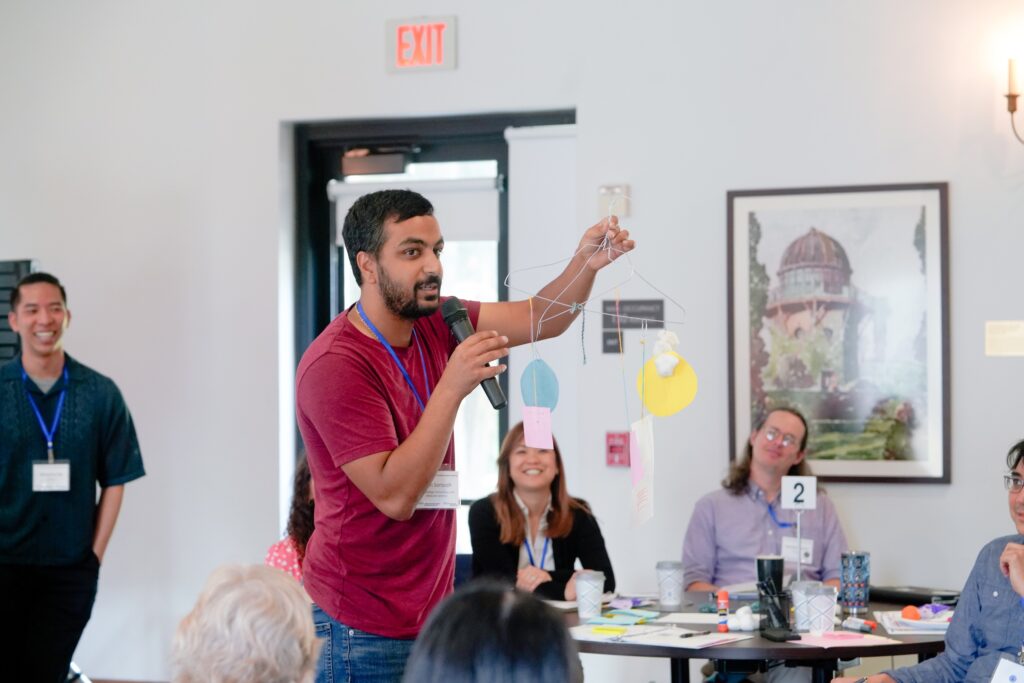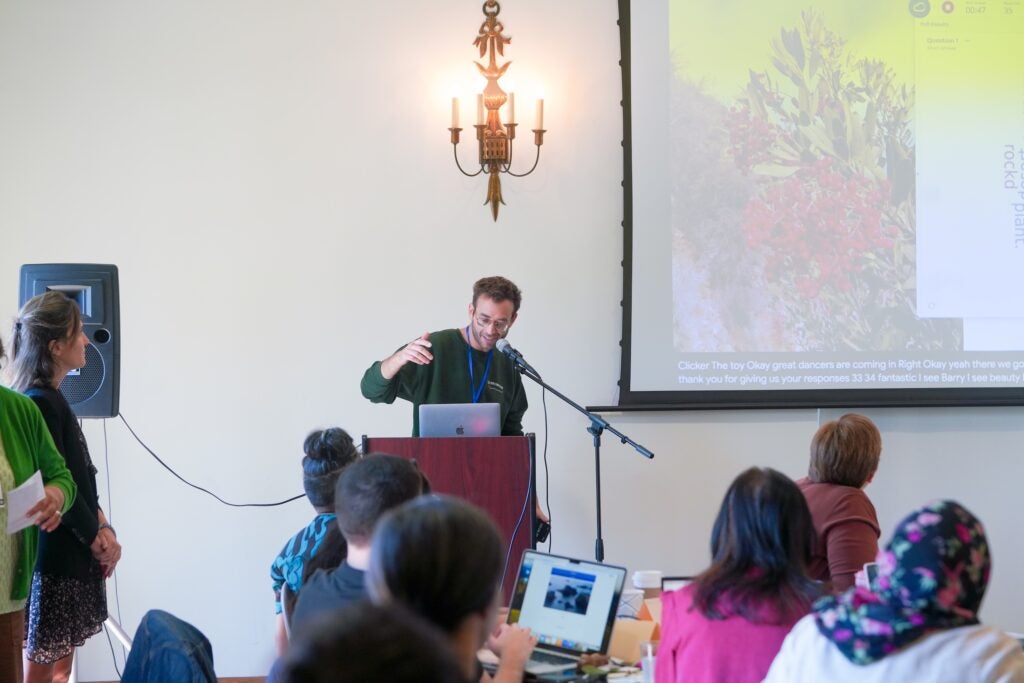The instructors gathered in Hershey Hall did not expect to be following commands given in Welsh while exploring and practicing active learning strategies. Though none of the participants were fluent in the language, they found themselves learning how to respond to the instructions given by presenter Elise Bell, a lecturer in the Department of Linguistics.
“Sefyll i fyny!” Bell said, gesturing for the group to stand up from their seats and move their arms in circles. The exercise — full of active participation and some awkward laughter — left participants with new perspectives and ideas for engaging students with course material that might seem intimidating.
Last month, 36 UCLA instructors participated in the Summer Institute on Evidence-Based Teaching, an annual program exploring effective teaching strategies within a supportive learning community. Co-facilitated by the Teaching and Learning Center (TLC) and the Center for Education Innovation and Learning in the Sciences (CEILS), the Institute trained educators to successfully engage students of all backgrounds through lessons grounded in backward design – a framework foregrounding clearly articulated course objectives and aligned assessments and active learning strategies.
For the organizers, the Institute’s methodical approach foregrounds teaching approaches supported by research- and practice-based results.
“Evidence-based teaching is about grounding our pedagogical praxis in what truly works for students based on educational psychology, cognitive science, and data about student learning,” explained Lisa Felipe, Interim Director of Educational Development Programs at the TLC and one of the Institute’s facilitators. “It also means gathering information from your students and using that information to improve your teaching.”
By centering research-backed approaches, the Summer Institute provided concrete ways to address classroom challenges while boosting student engagement. These instructional methods were modelled through interactive sessions that sparked reflection on how to promote student success. On day one, groups were tasked with building mobiles out of wire hangers, cotton balls, and yarn, which were later evaluated using rubrics scoring color usage and content knowledge.
As participants pointed out the project’s purposefully unclear criteria and lack of direction, facilitators led a discussion around prior subject knowledge and how instructor support impacts the creation of collaborative learning communities where all students can succeed.
“They hopefully appreciated the value and importance of group work, and recognizing one’s own – and others’ – strengths and areas for growth,” explained Rachel Kennison, Executive Director of CEILS and one of the facilitators. “Teaching and learning can, and in many cases should, be a collaborative process.”

Instructors also had the opportunity to apply these evidence-based strategies to their own teaching. Throughout the week, they worked in small groups, sorted by discipline, to design “teachable tidbits,” brief course modules with engaging activities and assessments to meet a course’s learning objectives.
Groups presented their teachable tidbits on the final day of the Institute, including the module on immersive foreign language education. Instructors from linguistics and languages departments spoke different languages to the audience, prompting them to interpret how to respond to questions and greetings. The interactive lesson empowered students to feel more comfortable immersing themselves in a language even without prior experience.
Another teachable tidbit by history, art history, Chicano/a Studies, and conservation instructors examined indigenous plant ecologies of the Los Angeles area. Participants explored the ecology and cultural significance of native vegetation through the case study of the toyon plant by sharing a leaf sample gathered from outside of Hershey Hall paired with videos by Gabrielino-Tongva educator Kimberly Morales Johnson.
The interdisciplinary presentation prompted the group to experience evidence-based teaching approaches firsthand, such as working with unfamiliar material.
“[It] taught me that I should step outside my comfort zone and stay there even if I’m worried that things might not work out,” noted Muriel C. McClendon, Associate Professor of history and Vice Chair for Graduate Affairs. “We often ask our students to do just that, and we should do the same.”

The Summer Institute is UCLA’s iteration of the National Academies Summer Institute, started at the University of Wisconsin–Madison in 2004. Since coming to campus in 2016, this year’s program was the first to expand beyond STEM disciplines to include social sciences and humanities instructors, creating an interdisciplinary setting for advancing teaching excellence.
Participants closed out the week with a certificate ceremony, joining a network of past cohorts across the country.
“They hopefully took away that they have a community of instructors and teaching center professionals that they can go to and get support from,” Kennison noted. Felipe echoed the desire for the Institute to help instructors see teaching as a communal and collaborative undertaking.
“In sharing stories, challenges, and participating in the various activities throughout the week, I hope instructors know that teaching doesn’t have to happen in a silo and that help is available from their peers, CEILS, or the TLC when they need it,” she emphasized.
